7 plants to propagate in June – these popular shrubs, perennials, and herbs are ideal for taking softwood cuttings this month
June is an ideal time to take cuttings and expand your plant collection
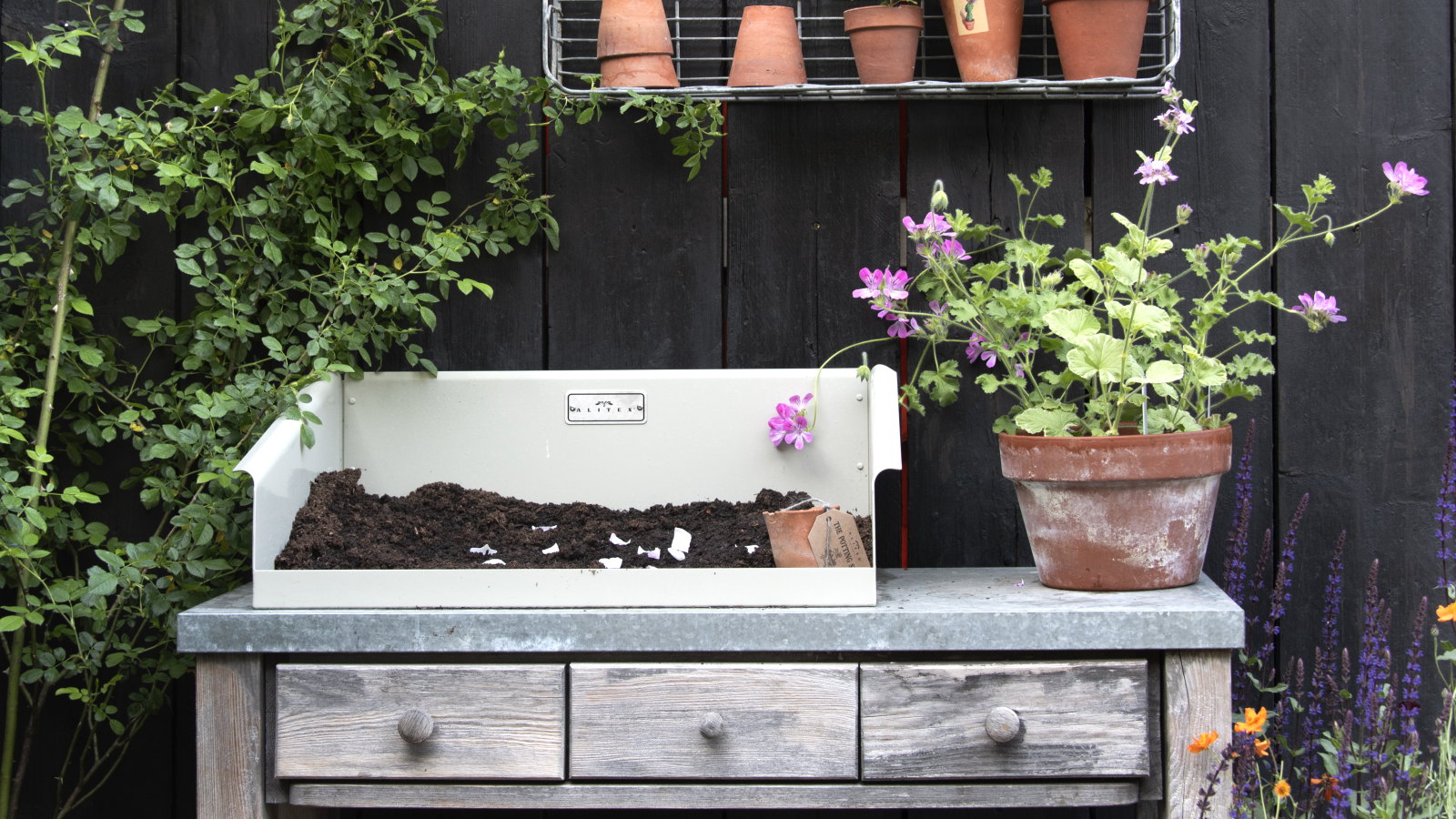

June is an ideal month to take softwood cuttings from many popular shrubs and perennials. These cuttings root quickly when taken in spring and early summer, providing a reliable and enjoyable method for obtaining new plants.
There is no doubt that June is consistently a busy month in the garden, with plenty of planting, weeding, feeding, and watering on the agenda. You should also set aside time to take plant cuttings, as hydrangeas, lavender, rosemary, verbena, bougainvillaea, and more can all be propagated through cuttings in June.
For a little inspiration, this guide examines some of the best plants to propagate in June, along with some expert advice on how to take plant cuttings and tips for each plant mentioned.

Plants to propagate in June - a snapshot
To avoid making any mistakes with plant cuttings, there are a few golden rules to observe if you want to propagate plants in June.
For example, all cutting tools must be clean and sharp, and the shoots need to come from healthy, non-flowering stems. It is advisable to take shoots early in the day when they contain more moisture.
The cuttings should be dipped in rooting hormone and carefully placed into pre-made holes in a quality potting soil formulated for seeds or cuttings.
Keep the cuttings moist, cover the pot with a clear plastic bag to increase moisture and humidity, and place it in a bright spot. However, keep the cuttings out of direct sunlight, which can scorch them.
Design expertise in your inbox – from inspiring decorating ideas and beautiful celebrity homes to practical gardening advice and shopping round-ups.
If all goes well, your cuttings should root within a few weeks. They can be potted up in larger individual pots and ultimately planted out into the garden next spring.
7 of the best plants to propagate in June
Hydrangeas

Hydrangeas are immensely popular flowering shrubs, cherished for their reliable, striking summer blooms and versatility.
There are lots of options for landscaping with hydrangeas, and the shrubs are simple to propagate from softwood cuttings taken in June. This is a budget-friendly method to obtain new hydrangeas for planting, and it is easier than attempting to grow them from seed.
To propagate hydrangeas from softwood cuttings, take a non-flowering shoot about four inches long. It should be green and flexible, yet it should snap when you bend it.
Cut the stem just below a node and remove the lower leaves from the cutting. If the remaining foliage is large, these can also be trimmed in half. Place the cuttings two-thirds deep into the compost, and they should root within 2-4 weeks.
Lavender

Adored for its flowers and fragrance, lavender is a well-loved backyard plant. As lavender can look tired, straggly, or leggy during its lifetime, taking cuttings is an effective way to propagate lavender and get replacement plants to add to your backyard ideas.
Or you can take cuttings to merely get more plants if you want to plant lavender elsewhere in the garden. Either way, cuttings are quicker and easier than planting lavender seeds, which are very slow to germinate.
Snip soft and flexible non-flowering stems from the plant with clean and sharp pruning shears. Prepare these into cuttings at least four inches long, with the lower leaves removed, and push these at least two inches deep into the compost.
Rosemary
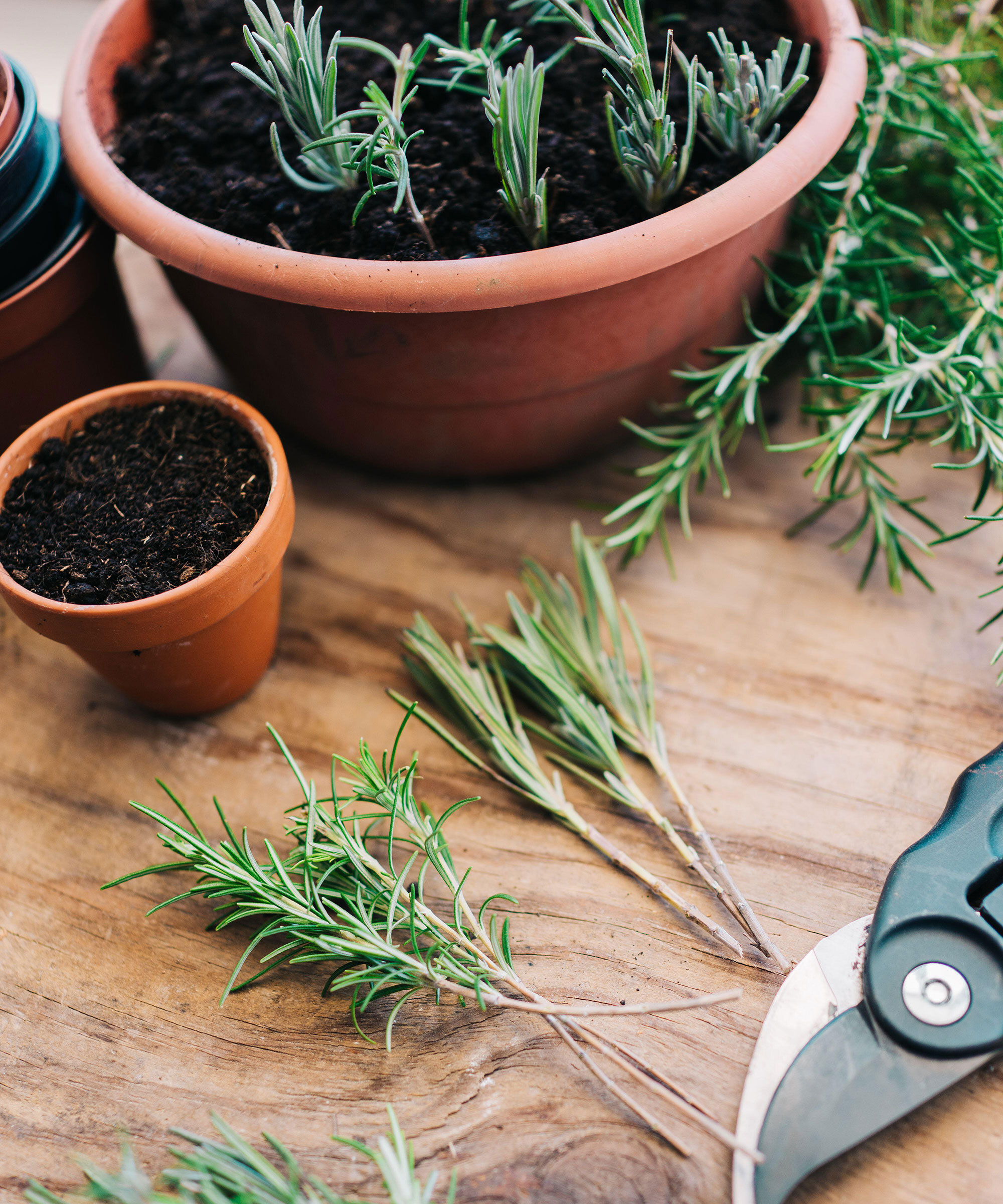
Rosemary can get woody, sparse, or leggy as the shrubs age. This is not the end of the world, and older rosemary plants can be knocked back into shape. But, as rosemary is simple to grow from softwood cuttings, taking them ahead of hard pruning rosemary is a safe bet.
Whether you are rescuing older rosemary or want new plants for a herb garden or to put in containers, you can propagate rosemary from softwood cuttings this month.
Having a good routine of taking cuttings annually means you will always have fresh rosemary plants, just in case. This is particularly important if you live in colder climates, where rosemary can succumb to cold and wet winters.
Make sure the stems you cut are disease-free, blemish-free, and not too woody. They want to be green, flexible, and non-flowering, as these will root the quickest. Prepare the cutting, dip the end in rooting hormone, and place several cuttings into one pot filled with compost.
Keep rosemary cuttings in a warm location with indirect light, though they can take 4-8 weeks to root.
Verbena

Verbena is a long-flowering plant that can dazzle with its pink-purple flowers, capable of being on display from late spring right through to the first frosts. With hundreds of perennial or annual species of verbena to choose from, there is certainly a lot of choice.
When you get a verbena you love, cuttings are the best way to get an ideal clone of that plant. This is because you won’t be guaranteed to get the same type if you try growing verbena from seed you collect from the plant in fall.
Taking verbena cuttings is also easy and rewarding. Softwood cuttings taken from verbena this month will root quickly and potentially be large enough to pot on into larger containers in 4-6 weeks.
Bougainvillea
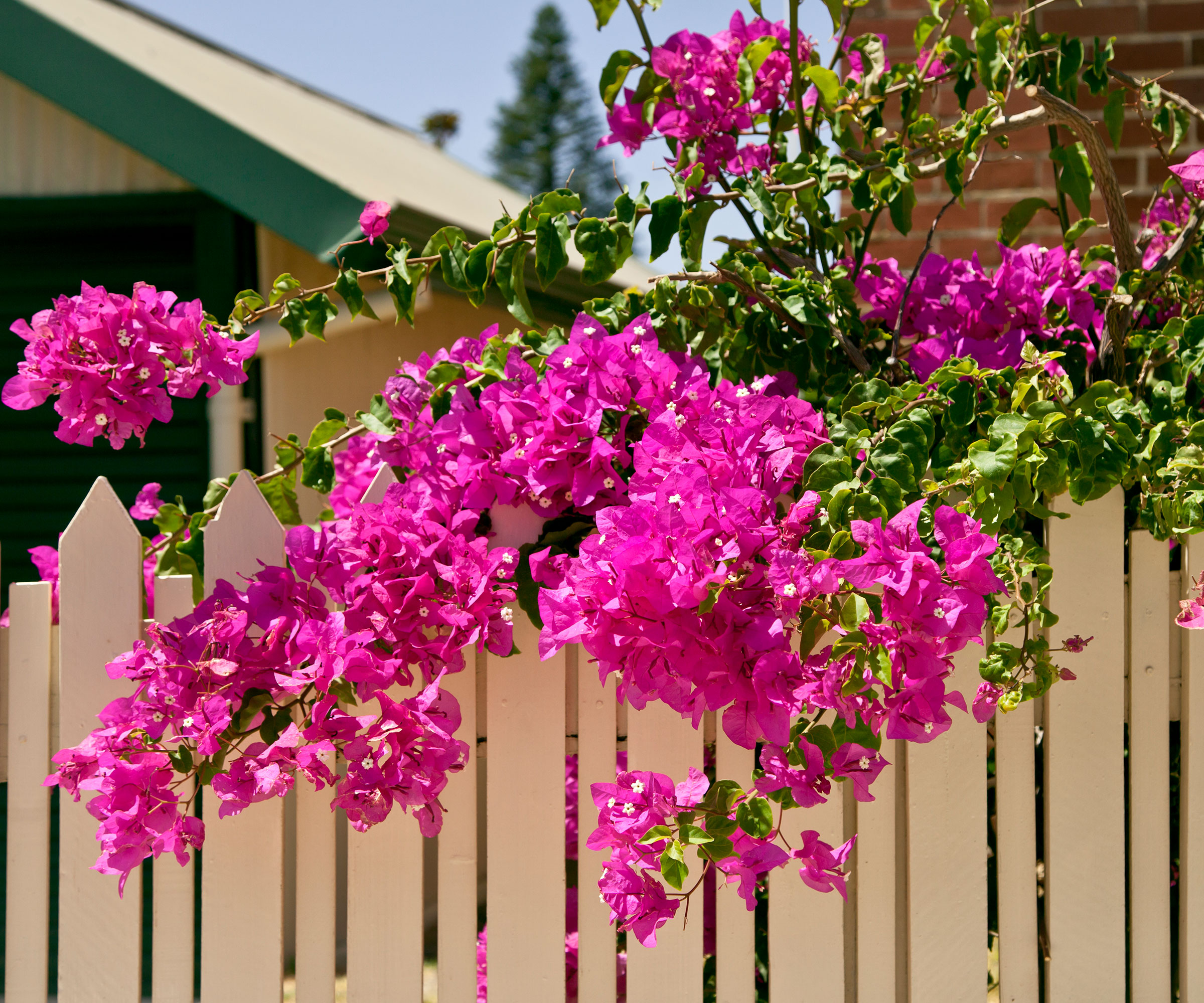
The tropical climbing plants certainly make an impact with their bright, impactful blooms that flower prolifically throughout the summer. Some varieties reach more than 20 feet, while there are dwarf types if you want to grow bougainvillaea in pots.
If you grow bougainvillaea and want more plants, cuttings offer a great opportunity to propagate bougainvillaea. June is an ideal month to do so, as the plant is growing rapidly, which should increase your chances of success.
Always wear thornproof gloves when working with bougainvillaea, as the plants have sharp thorns. Take 4-6-inch cuttings and remove all bar the top leaves before dipping them in rooting hormone and placing them into compost.
Bougainvillaea cuttings take a while to root and also have a reputation for being tricky. So take lots of cuttings, just in case any of them fail to root.
Salvia
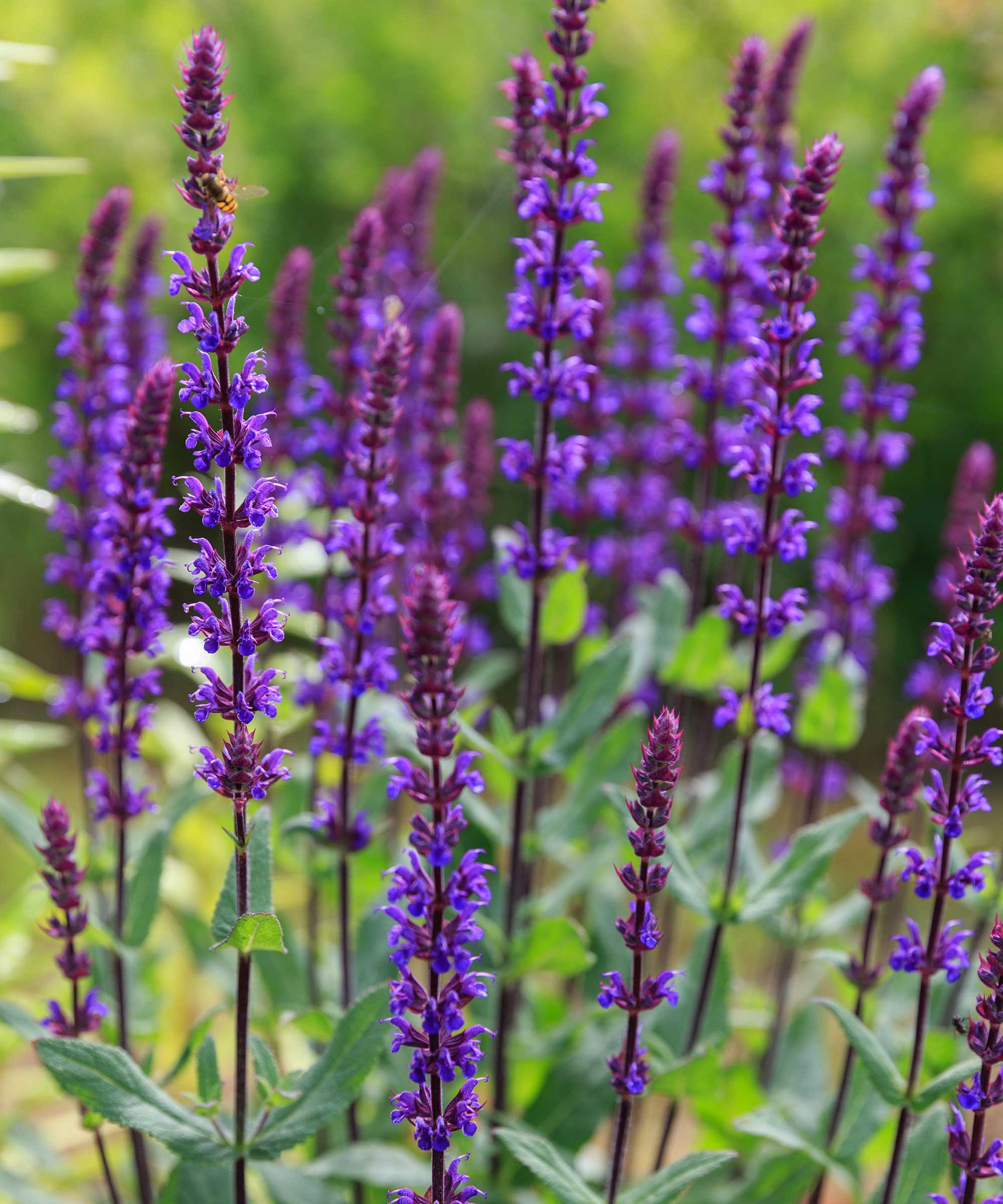
Salvias are one of the easiest and best perennials to grow in warmer climates, as they thrive in hot and dry climates.
When you grow salvia, you also benefit from the fact that they are great plants for pollinators, adored as much by bees, butterflies, and hummingbirds as they are by gardeners.
There are thousands of types of salvias in their plant family. If you want to propagate salvia to grow your collection of these fantastic perennials, then softwood cuttings are a great way, and June is an ideal month to do it.
The usual rules apply. Take 4-6-inch cuttings from healthy non-flowering stems and remove all the lower leaves. Dip the cuttings into rooting hormone, then into a small pot filled with well-draining potting soil.
You can get up to six Salvia cuttings in one four-inch pot. Keep them moist, in indirect sunlight, and roots should develop within a month.
Russian sage

Russian sage, formerly known as Perovskia, is a remarkably low-maintenance and drought-tolerant shrub that produces spikes of lavender-blue flowers. These blooms stand out against the aromatic grey foliage and appear year after year, plus pollinators cherish them.
While you can grow Russian sage from seed or divide existing plants, taking softwood cuttings is a simple way to propagate Russian sage for more plants to add to your garden.
Late spring is an ideal time to do this, and Russian sage cuttings should form roots in 3-6 weeks.
As an alternative to placing the cuttings in soil, you can put them in water. This offers the advantage of being able to see the roots develop; however, it can take a bit longer, and you need to change the water regularly.
FAQs
Can you take rose cuttings in June?
Yes, you can take rose cuttings in June. This month is an ideal time to take softwood cuttings of new growth that will root quickly.
Take a cutting 5-7 inches long and remove all the lower leaves. Dip the cutting in rooting hormone and place it into a container filled with well-draining potting mix.
You can also root rose cuttings in water by placing the lower two-thirds of the cutting in a container filled with water. Once you see roots forming in 2-4 weeks, you can pot up the cuttings.
Here we talked in depth about plants to propagate in June, but are you searching for more monthly gardening inspiration?
If so, we have you covered. These are guides to flowers to plant in June and plants to prune in June that are full of expert advice and will give you lots of jobs to add to your monthly to-do list.

Drew has worked as a writer since 2008 and was also a professional gardener for many years. As a trained horticulturist, he worked in prestigious historic gardens, including Hanbury Hall and the world-famous Hidcote Manor Garden. He also spent time as a specialist kitchen gardener at Soho Farmhouse and Netherby Hall, where he grew vegetables, fruit, herbs, and cut flowers for restaurants. Drew has written for numerous print and online publications and is an allotment holder and garden blogger. He is shortlisted for the Digital Gardening Writer of the Year at the 2025 Garden Media Guild Awards.
You must confirm your public display name before commenting
Please logout and then login again, you will then be prompted to enter your display name.
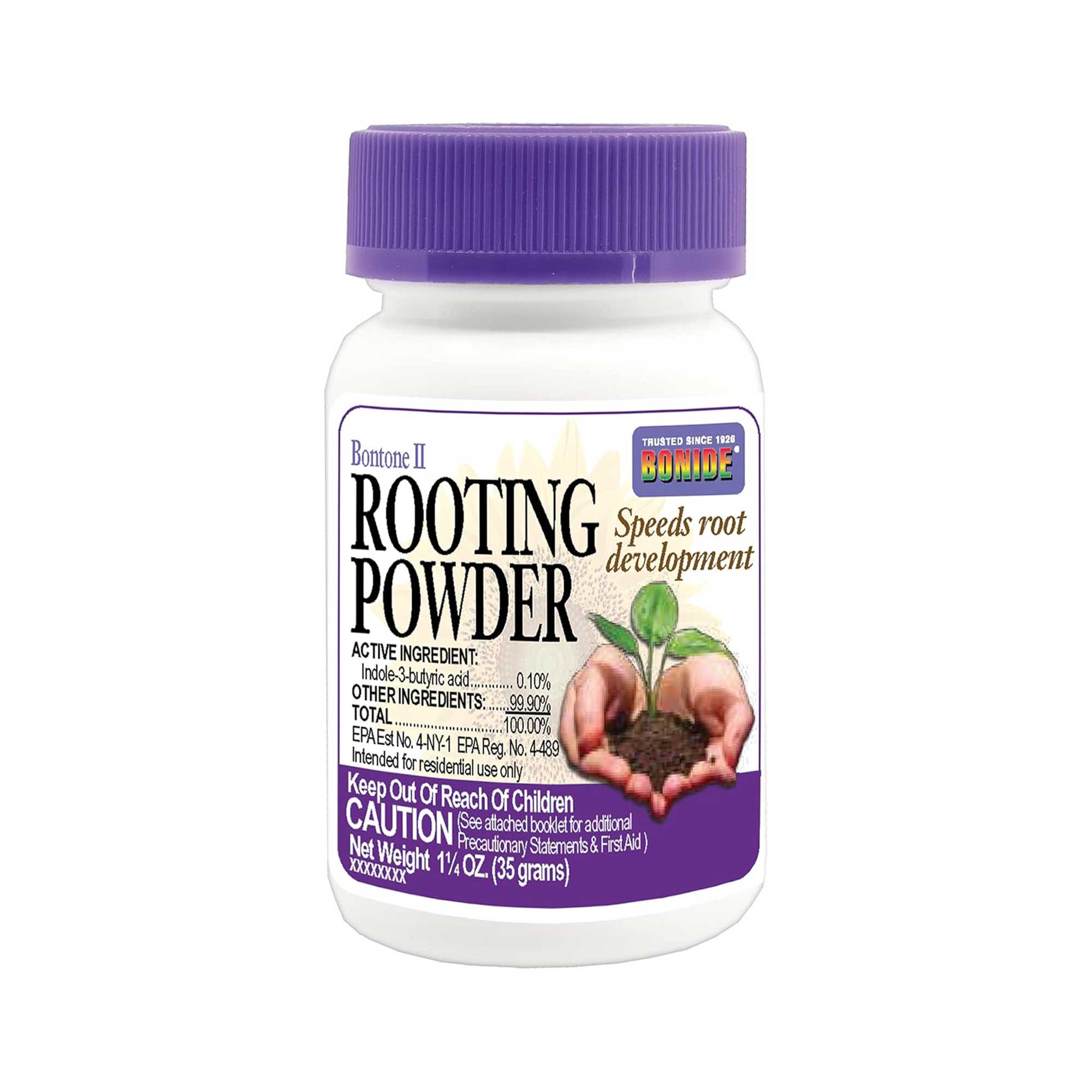
![Tonma Pruning Shears [made in Japan] 8" Bypass Hand Pruners, Garden Scissors Clippers, Plant Trimmers](https://cdn.mos.cms.futurecdn.net/kq8bCJ4eoJd8woahvgbDFJ.jpg)
